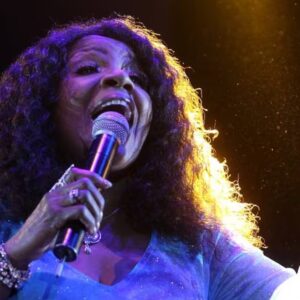
“𝙄 𝙒𝙞𝙡𝙡 𝙎𝙪𝙧𝙫𝙞𝙫𝙚” – 𝙂𝙡𝙤𝙧𝙞𝙖 𝙂𝙖𝙮𝙣𝙤𝙧
“I Will Survive,” performed by Gloria Gaynor and released in 1978, is one of the most iconic and empowering songs of the disco era. Known for its powerful message of resilience and self-empowerment, the song has become a timeless anthem of strength and independence. Its blend of infectious rhythm, emotional depth, and universal appeal has cemented its place as a classic in music history.
The lyrics of “I Will Survive” are a testament to personal resilience and empowerment in the face of adversity. The song opens with the lines, “At first, I was afraid, I was petrified / Kept thinking I could never live without you by my side,” which immediately set the stage for a narrative of overcoming hardship. The chorus, “Oh no, not I, I will survive / Oh, as long as I know how to love, I know I’ll stay alive,” serves as a powerful declaration of self-sufficiency and strength. The lyrics convey a sense of triumph over a difficult breakup, celebrating the ability to move forward and thrive despite challenges.
Musically, “I Will Survive” is characterized by its energetic disco beat and dynamic arrangement. The song features a driving rhythm, upbeat tempo, and prominent use of strings and horns, creating an infectious and celebratory sound. Gloria Gaynor’s vocal performance is marked by its emotional intensity and vocal power, conveying both vulnerability and confidence. The song’s arrangement and Gaynor’s performance work together to create a sense of empowerment and resilience, enhancing the song’s impact and appeal.

The impact of “I Will Survive” is evident in its commercial success and enduring popularity. The song reached number one on the Billboard Hot 100 and has been widely acclaimed for its message and musical quality. Its success contributed to Gloria Gaynor’s prominence as a leading figure in the disco era and helped solidify the song’s status as a classic anthem of empowerment. The song’s ability to connect with listeners and inspire a sense of strength underscores its significance in music history.
Culturally, “I Will Survive” has maintained its status as a symbol of personal empowerment and resilience. The song has been embraced by diverse audiences and has been featured in numerous films, television shows, and other media. Its message of overcoming adversity and reclaiming one’s strength resonates with listeners across generations, making it a timeless and universal anthem.
In conclusion, “I Will Survive” by Gloria Gaynor is a powerful and enduring anthem of resilience and empowerment. Through its impactful lyrics, energetic musical arrangement, and Gaynor’s dynamic vocal performance, the song conveys a message of strength and self-sufficiency. Its commercial success and lasting cultural impact highlight its importance as a classic of the disco era and a symbol of personal empowerment. The song’s ability to inspire and uplift listeners makes it a timeless piece that continues to resonate with audiences around the world.

“𝙒𝙚 𝙒𝙞𝙡𝙡 𝙍𝙤𝙘𝙠 𝙔𝙤𝙪” – 𝙌𝙪𝙚𝙚𝙣
“We Will Rock You,” a classic anthem by the legendary rock band Queen, is one of the most iconic and influential songs in the history of rock music. Released in 1977 as part of their album News of the World, the song has transcended generations and genres, becoming a timeless staple in sports arenas, concerts, and cultural events around the world.
The brilliance of “We Will Rock You” lies in its simplicity and powerful rhythm. Composed by Queen’s guitarist Brian May, the song is famous for its stomp-stomp-clap beat, a rhythm that is both primal and compelling. The song’s structure is deliberately minimalistic, featuring only vocals, stomps, and claps, which creates a unique and resonant sound that is instantly recognizable. This simplicity allows the song to be universally engaging, making it easy for audiences to participate in the rhythm, whether they are at a live concert or watching from the stands of a sports stadium.
Lyrically, “We Will Rock You” is an anthem of defiance and empowerment. The song’s verses paint a vivid picture of a rebellious individual who is ready to face challenges head-on. The chorus, with its rousing “We will, we will rock you” refrain, serves as a rallying cry that unites listeners in a shared sense of strength and determination. The song’s themes of resilience and self-confidence resonate strongly with audiences, reinforcing its role as a powerful motivator and source of inspiration.

The cultural impact of “We Will Rock You” extends far beyond its initial release. The song’s widespread use in sports events, from football matches to basketball games, highlights its ability to energize and unify crowds. Its incorporation into popular culture through movies, advertisements, and television shows further solidifies its status as a cultural phenomenon. The song’s enduring popularity is a testament to Queen’s exceptional ability to craft music that resonates with people across different contexts and eras.
In conclusion, “We Will Rock You” by Queen is more than just a rock song; it is a cultural icon that has left an indelible mark on music and popular culture. Its innovative rhythm, empowering lyrics, and widespread influence exemplify the band’s genius and the song’s universal appeal. As a result, “We Will Rock You” continues to inspire and energize listeners, proving that great music has the power to transcend time and place.

“𝙏𝙝𝙚 𝙈𝙖𝙣 𝙒𝙝𝙤 𝙎𝙤𝙡𝙙 𝙩𝙝𝙚 𝙒𝙤𝙧𝙡𝙙” – 𝘿𝙖𝙫𝙞𝙙 𝘽𝙤𝙬𝙞𝙚
“The Man Who Sold the World” by David Bowie is a significant song in Bowie’s discography, known for its enigmatic lyrics and unique musical style. Released in 1970, the song is the title track of Bowie’s third studio album and reflects his early exploration of complex themes and innovative sounds.
“The Man Who Sold the World” by David Bowie
Overview:
“The Man Who Sold the World” was written and performed by David Bowie, released as the title track of his 1970 album The Man Who Sold the World. The song was produced by Tony Visconti and marked a notable shift in Bowie’s musical direction, incorporating elements of glam rock and proto-heavy metal.
Themes and Lyrics:
The lyrics of “The Man Who Sold the World” are often interpreted as a reflection on identity, self-alienation, and the search for meaning. The song’s narrator encounters a mysterious figure who seems to represent a fragmented aspect of himself or a lost part of his identity.
Lines such as, “We passed upon the stair, we spoke of was and when,” create a surreal and introspective atmosphere. The chorus, “I’m not a fool, I’m not a fool, I’m not a fool, I’m not a fool,” reflects a sense of disillusionment and introspection.
The song’s cryptic lyrics invite multiple interpretations, adding to its enduring intrigue and appeal.
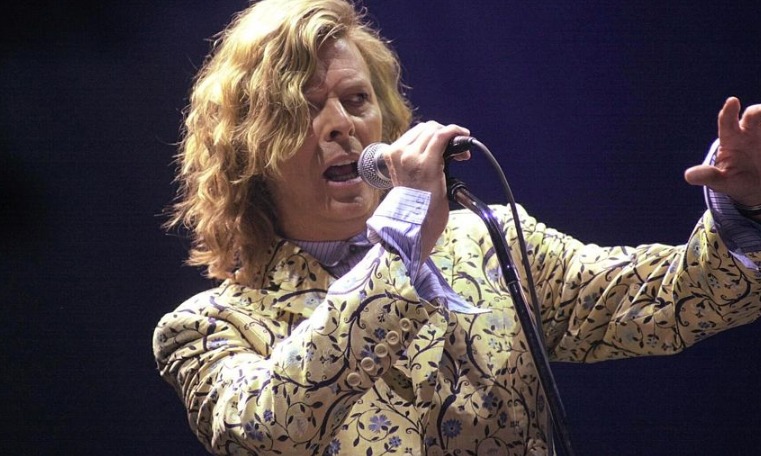
Musical Style and Production:
Musically, “The Man Who Sold the World” features a heavy, driving rhythm with a mix of rock and proto-metal influences. The song is characterized by its distinctive guitar riff, played by Mick Ronson, and Bowie’s dynamic vocal performance.
The production by Tony Visconti complements the song’s dark and brooding mood, with a sound that combines elements of rock and avant-garde experimentation. The arrangement includes prominent guitar work, a steady drum beat, and a dramatic vocal delivery.
Impact and Legacy:
“The Man Who Sold the World” has become one of David Bowie’s most iconic songs and a key track in his early career. The song’s influence extends beyond its initial release, impacting various genres and inspiring numerous artists.
The song’s themes and musical style have been widely discussed and analyzed, contributing to its lasting significance in Bowie’s discography. It has been covered by various artists and remains a popular and influential piece of music.
“The Man Who Sold the World” by David Bowie is a significant track from 1970 known for its enigmatic lyrics, distinctive musical style, and exploration of complex themes. The song’s combination of rock and avant-garde influences, along with its introspective narrative, has ensured its place as a standout piece in David Bowie’s career and music history.

“𝙄 𝙒𝙖𝙣𝙣𝙖 𝘿𝙖𝙣𝙘𝙚 𝙬𝙞𝙩𝙝 𝙎𝙤𝙢𝙚𝙗𝙤𝙙𝙮” – 𝙒𝙝𝙞𝙩𝙣𝙚𝙮 𝙃𝙤𝙪𝙨𝙩𝙤𝙣
Released in 1987, “I Wanna Dance with Somebody (Who Loves Me)” is one of Whitney Houston’s most iconic and enduring hits. Featured on her second studio album, Whitney, the song became a defining anthem of the 1980s and remains a classic of pop and dance music.
Musically, “I Wanna Dance with Somebody” is characterized by its upbeat, energetic sound, blending elements of dance-pop and synth-pop. The song features a driving beat, catchy melodies, and a vibrant arrangement that includes prominent synthesizers, horns, and a powerful rhythm section. Whitney Houston’s vocal performance is dynamic and powerful, showcasing her range and ability to convey both joy and yearning in her delivery.
Lyrically, the song expresses a longing for companionship and the desire to find someone to share moments of joy and dancing. The chorus, with its repeated plea to “dance with somebody who loves me,” highlights the song’s central theme of seeking connection and love. The lyrics capture a sense of loneliness and the excitement of finding someone to share one’s happiness with, resonating with listeners who have experienced similar feelings.
The music video for “I Wanna Dance with Somebody” features Whitney Houston performing the song with infectious energy and charisma. It includes vibrant dance scenes, stylish visuals, and scenes of Houston interacting with fans and dancing, which enhances the song’s upbeat and celebratory mood.
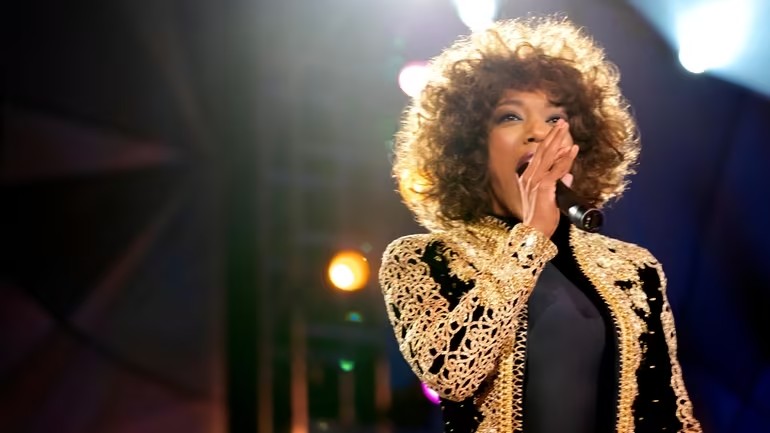
“I Wanna Dance with Somebody” achieved significant commercial success, reaching number one on the Billboard Hot 100 chart and becoming a hit in several other countries. It remains one of Whitney Houston’s most beloved and memorable songs, celebrated for its catchy melody, uplifting lyrics, and Houston’s exceptional vocal performance. The song’s enduring appeal is a testament to its ability to capture the joy and excitement of dance and the universal desire for connection and love.

“Lookin’ Out My Back Door” by Creedence Clearwater Revival.49

In the colorful tapestry of classic rock, few songs shine as brightly as “Lookin’ Out My Back Door” by Creedence Clearwater Revival. Released in 1970, this whimsical tune invites listeners on a joyous journey through imagination and nostalgia, with its infectious rhythm and playful lyrics.
1. Origin:
“Lookin’ Out My Back Door” was written by Creedence Clearwater Revival’s frontman, John Fogerty. The song was included on the band’s album “Cosmo’s Factory,” which became one of their most successful and acclaimed albums.
2. Chart Success:
Upon its release, “Lookin’ Out My Back Door” became a chart-topping hit for Creedence Clearwater Revival, reaching the top 10 on the Billboard Hot 100. Its upbeat tempo and catchy melody resonated with audiences, earning it widespread popularity and acclaim.
3. Creedence Clearwater Revival:
Creedence Clearwater Revival, often abbreviated as CCR, was a powerhouse band of the late 1960s and early 1970s. With their distinct blend of rock, blues, and country influences, CCR carved out a unique place in music history, leaving an indelible mark on the rock music landscape.
4. Legacy:
“Lookin’ Out My Back Door” remains a beloved favorite among fans of Creedence Clearwater Revival, serving as a timeless reminder of the band’s infectious energy and musical prowess. Its whimsical lyrics and upbeat melody continue to bring joy to listeners of all ages.
5. Cultural Impact:
Beyond its chart success, “Lookin’ Out My Back Door” has left a lasting impact on popular culture. The song has been featured in films, television shows, and commercials, further cementing its status as a classic in the realm of rock music.

Creedence Clearwater Revival – Born on the Bayou

If you’re a fan of classic rock with a good dose of swampy Southern charm, then Creedence Clearwater Revival’s “Born on the Bayou” is a song you likely know and love. Released in 1969 as the opening track on their album Bayou Country, it quickly became a fan favorite, showcasing the band’s raw energy and John Fogerty’s unique songwriting style.
While the song evokes a vivid picture of the Louisiana bayou, with its heat, hoodoos (those mysterious spiritual figures), and the ever-present Mississippi River, it’s interesting to note that Fogerty himself had never actually lived in the South. Instead, as he explains, “Born on the Bayou” was born out of pure imagination, conjured up late one night in his tiny apartment. This doesn’t take away from the song’s authenticity, though. Fogerty’s lyrics paint a picture so real, you can practically feel the humidity clinging to your skin and hear the cicadas buzzing in the distance.
Musically, “Born on the Bayou” is a prime example of swamp rock, a genre that Fogerty himself helped pioneer. The song opens with a distorted guitar intro, courtesy of Fogerty’s trusty Gibson ES-175 (sadly stolen shortly after recording). This sets the stage for a driving rhythm section, punctuated by Doug Clifford’s powerful drumming. Some might describe the sound as Southern rock or straight-up rock and roll, but there’s a certain grit and earthiness to it that’s distinctly swampy.
Speaking of Doug Clifford, the band’s drummer, it’s interesting to hear his take on the song. While “Proud Mary” ended up being the A-side of the single, reaching number 2 on the Billboard charts, Clifford always preferred “Born on the Bayou.” He describes it as a “nasty” track, full of energy and attitude. Though he eventually warmed up to “Proud Mary,” his initial reaction highlights the raw power and unique character of “Born on the Bayou.”
The song’s legacy is undeniable. It’s considered one of Creedence Clearwater Revival’s greatest hits, praised for Fogerty’s powerful vocals and the band’s tight musicianship. Whether you’re a longtime fan or just discovering the magic of Creedence Clearwater Revival, “Born on the Bayou” is a must-listen. It’s a song that takes you on a journey deep into the heart of the American South, a place where the music is as raw and untamed as the landscape itself.
Video
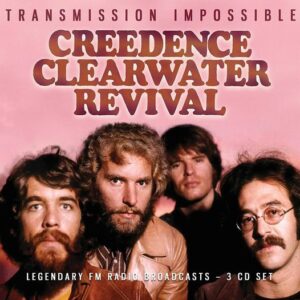
Creedence Clearwater Revival – Have You Ever Seen the Rain?

Have You Ever Seen the Rain? by Creedence Clearwater Revival: A Timeless Classic
“Have You Ever Seen the Rain” by Creedence Clearwater Revival is an enduring classic that resonates deeply with listeners of all ages. This song, penned by the band’s lead vocalist and primary songwriter John Fogerty, was released as a single in 1971 from their album Pendulum. Its timeless appeal has cemented its place in the annals of rock history, with its evocative lyrics and memorable melody.
When Fogerty wrote “Have You Ever Seen the Rain,” he imbued it with a sense of melancholic introspection, capturing the emotional turbulence of the era. The song is often interpreted as a reflection on the internal strife within the band, particularly the departure of Tom Fogerty, John’s brother, which brought a poignant end to the original lineup of Creedence Clearwater Revival. This layer of personal and professional discord adds a rich depth to the song, making it more than just a catchy tune.
Musically, “Have You Ever Seen the Rain” showcases Creedence Clearwater Revival’s signature blend of rock, country, and folk influences. The song opens with a simple yet haunting guitar riff, setting the tone for Fogerty’s distinctive, gravelly voice to deliver the heartfelt lyrics. The rhythm section provides a steady, driving beat that mirrors the relentless passage of time and the inevitability of change, themes central to the song’s message.
Lyrically, the song is a masterclass in simplicity and depth. Lines like “Someone told me long ago / There’s a calm before the storm” and the poignant chorus “Have you ever seen the rain / Coming down on a sunny day?” capture the universal experience of sorrow amidst happiness, a dichotomy that many can relate to. This universal appeal has allowed the song to transcend generations, continuing to find new audiences even decades after its release.
Have You Ever Seen the Rain achieved significant commercial success, reaching the pinnacle of the RPM 100 national singles chart in Canada and peaking at number eight on the Billboard Hot 100 in the United States. Its popularity was not confined to North America; it also reached number 36 in the UK charts. The song’s success was further solidified when it became the group’s eighth gold-selling single, a testament to its widespread acclaim and enduring popularity.
In the modern era, the song’s legacy continues to grow. In March 2023, it surpassed one billion streams on Spotify, a milestone that underscores its timeless relevance and the deep connection it maintains with listeners around the world. This achievement highlights the song’s ability to resonate with both longtime fans and new listeners discovering Creedence Clearwater Revival for the first time.
In conclusion, “Have You Ever Seen the Rain” is more than just a song; it is a piece of musical history that encapsulates the spirit of an era while addressing timeless themes of change and loss. Its blend of poignant lyrics, memorable melody, and emotional depth ensures that it remains a beloved classic, cherished by audiences across generations. Whether you are a longtime fan of Creedence Clearwater Revival or a new listener, this song is sure to leave a lasting impression.
Video
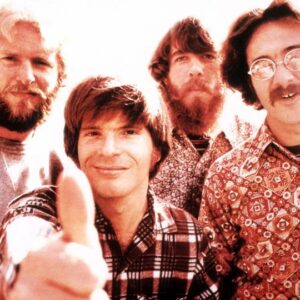
Creedence Clearwater Revival – Penthouse Pauper.
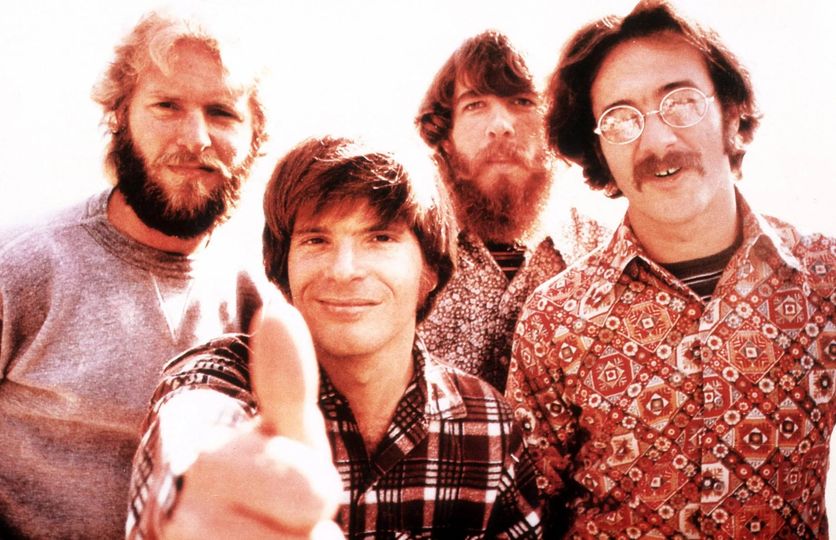
Penthouse Pauper: A Ballad of the Working Man’s Struggle
In the annals of rock and roll history, Creedence Clearwater Revival stands as a beacon of authenticity, a band that eschewed the psychedelic flourishes of their contemporaries to deliver a sound that was both deeply rooted in American musical traditions and undeniably original. Their music, a potent blend of blues, rockabilly, and swamp rock, resonated with a generation seeking solace and connection amidst the tumultuous social and political upheaval of the late 1960s.
Penthouse Pauper, a cut from their 1969 sophomore album Bayou Country, is a prime example of Creedence Clearwater Revival’s knack for crafting songs that capture the essence of the working man’s experience. With its gritty guitar riffs, driving rhythm section, and John Fogerty’s impassioned vocals, the song paints a vivid portrait of a man trapped in a cycle of poverty and disillusionment.
The lyrics, penned by Fogerty, are a masterclass in storytelling. He weaves a tale of a man who, despite his best efforts, can’t seem to escape the clutches of financial hardship. He lives in a rundown apartment, works a dead-end job, and dreams of a better life, but the reality of his situation weighs heavily upon him.
“I’m a penthouse pauper,” he sings, his voice laced with weariness and resignation. “Living on the bottom floor.” The imagery is stark and evocative, capturing the physical and emotional confinement of the protagonist’s existence.
The song’s chorus is a powerful declaration of defiance, as Fogerty refuses to succumb to despair. “I’m gonna make it someday,” he sings, his voice filled with determination. “I’m gonna be free.”
Penthouse Pauper is more than just a song about poverty; it’s a song about the human spirit’s resilience in the face of adversity. It’s a reminder that even in the darkest of times, there is always hope for a brighter future.
Creedence Clearwater Revival’s music has stood the test of time, and Penthouse Pauper remains one of their most enduring and poignant songs. It’s a testament to the band’s ability to connect with listeners on an emotional level and to speak to the universal truths of human experience.
Video
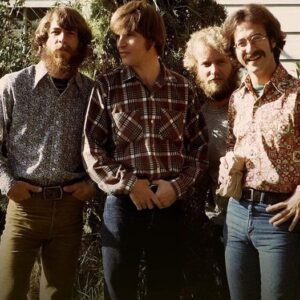
Creedence Clearwater Revival – Feelin’ Blue

Creedence Clearwater Revival, the legendary American rock band known for their swamp rock sound, produced numerous hits throughout their short career. Among these enduring classics is “Feelin’ Blue”, a track that perfectly captures the essence of blues-infused rock and roll. Released in 1969 as part of their album Willy and the Poor Boys, the song has become a staple of their repertoire, captivating audiences with its infectious energy and heartfelt lyrics.
From the opening notes, “Feelin’ Blue” establishes its bluesy roots. The song’s structure follows a traditional 12-bar blues pattern, with each verse consisting of three lines of lyrics followed by a single-line response. This repetitive structure, a hallmark of the blues, emphasizes the song’s central theme of melancholy and heartache.
John Fogerty’s distinctive vocals, imbued with both raw emotion and a touch of grit, perfectly convey the song’s message. His voice effortlessly transitions between smooth, soaring notes and raspy, soulful delivery, adding depth and authenticity to the lyrics. Fogerty’s guitar work mirrors the vocal performance, with bluesy riffs and soulful licks that intertwine with the rhythm section to create a captivating soundscape.
The lyrics of “Feelin’ Blue” paint a vivid picture of emotional turmoil and longing. The narrator grapples with feelings of sadness and loneliness, seeking solace in the familiar sounds of the blues. The song’s title, repeated throughout the lyrics, serves as a constant reminder of the narrator’s melancholic state.
Despite the somber theme, “Feelin’ Blue” is not a song of despair. There’s an underlying resilience in the narrator’s voice, a hint of hope amidst the sorrow. The blues, after all, is a genre born out of hardship, yet it often carries within it a sense of perseverance and the ability to find beauty in the depths of emotion.
Creedence Clearwater Revival’s “Feelin’ Blue” stands as a testament to the power of blues-infused rock and roll. With its soulful vocals, infectious guitar riffs, and relatable lyrics, the song continues to resonate with listeners, reminding them that even in the face of heartache, there’s always the possibility of finding solace in the music.
Video
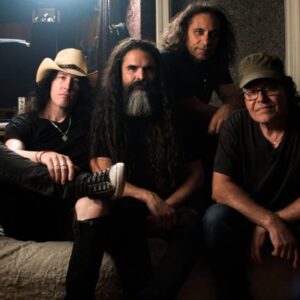
Creedence Clearwater Revival – Sweet Hitch-Hiker

Sweet Hitch-Hiker by Creedence Clearwater Revival: A Country-Rock Ballad with a Twist
In the annals of rock and roll history, few bands have captured the essence of Americana quite like Creedence Clearwater Revival. With their swampy guitars, driving rhythms, and John Fogerty’s distinctively raspy vocals, they painted vivid sonic landscapes that celebrated the spirit of the American South. Their 1971 hit, “Sweet Hitch-Hiker”, stands as a testament to their enduring legacy, showcasing their ability to blend infectious melodies with insightful storytelling.
“Sweet Hitch-Hiker” is a country-rock ballad that follows the narrative of a young man who encounters a mysterious hitchhiker on a lonely stretch of road. Intrigued by her beauty and enigmatic aura, he offers her a ride, and soon they find themselves engaged in a captivating conversation. As the miles fly by, the hitchhiker reveals cryptic clues about her past and her connection to the land, leaving the narrator both captivated and perplexed.
The song’s opening lines immediately set the scene, painting a picture of a desolate highway bathed in the warm glow of the setting sun. Fogerty’s voice, imbued with a touch of weariness, paints the picture of a solitary traveler seeking companionship and adventure. The introduction of the harmonica, a staple of country music, further establishes the song’s rustic Americana aesthetic.
As the verse unfolds, the narrator describes the hitchhiker’s captivating beauty, her long, flowing hair and her eyes that “shine like diamonds.” Her presence is both alluring and unsettling, hinting at a hidden depth that lies beneath her surface. The lyrics are rich with imagery, evoking a sense of the natural world, from the “tall pines” that line the road to the “whistling wind” that carries the hitchhiker’s secrets.
The chorus of “Sweet Hitch-Hiker” is a catchy, sing-along affair, with Fogerty’s vocals soaring over a bed of driving guitars and a steady beat. The repetitive refrain, “Oh, sweet hitchhiker, where are you bound?” adds an element of mystery and intrigue, leaving the listener wondering about the hitchhiker’s true identity and destination.
The second verse delves deeper into the hitchhiker’s enigmatic persona. She speaks of “lost lovers” and “forgotten dreams,” hinting at a troubled past that has shaped her present. Her connection to the land is further emphasized, as she sings of “rivers that flow” and “mountains that rise.” The narrator, increasingly captivated by her story, feels a growing sense of connection, despite the lingering uncertainty about her true nature.
The bridge of “Sweet Hitch-Hiker” takes an unexpected turn, as the hitchhiker suddenly vanishes, leaving the narrator alone on the empty road. The music takes on a dreamlike quality, with the harmonica weaving a haunting melody over the sparse instrumentation. The narrator is left to ponder the encounter, wondering if the hitchhiker was real or merely a figment of his imagination.
The song’s final verse brings the narrative to a close, with the narrator reflecting on the fleeting encounter. He acknowledges the mystery that surrounds the hitchhiker but expresses gratitude for the brief connection they shared. The final lines, “I’ll never forget her sweet smile,” underscore the enduring impact the hitchhiker has had on him.
“Sweet Hitch-Hiker” is a captivating tale of chance encounters, hidden truths, and the enduring power of human connection. With its blend of country-rock sensibilities and insightful storytelling, it stands as a testament to Creedence Clearwater Revival’s mastery of the American songbook. The song’s enduring popularity is a testament to its ability to resonate with listeners across generations, leaving an indelible mark on the landscape of rock and roll history.
